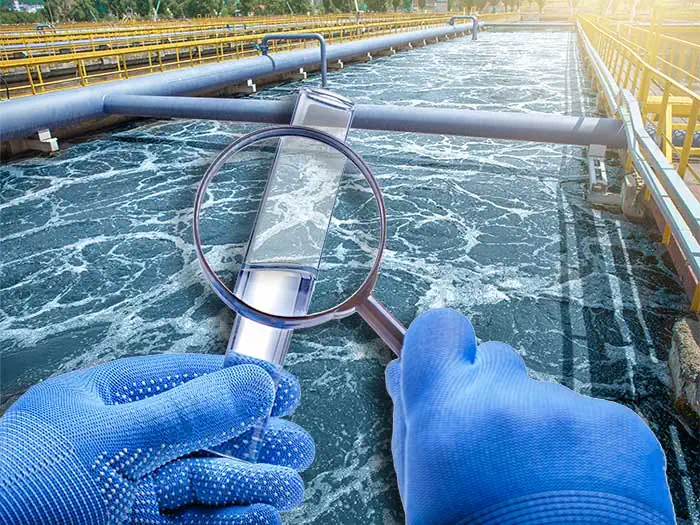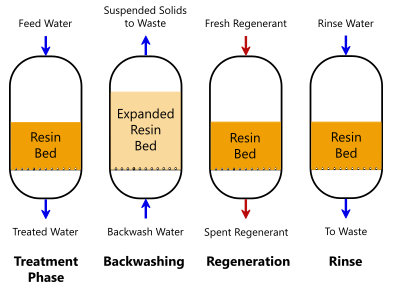M270 PFAS Treatment for Sustainable Waste Management
Wiki Article
Cutting-edge PFAS Treatment Solutions for Safer Water
The raising prevalence of PFAS contamination in water materials necessitates an essential exam of cutting-edge treatment options. Furthermore, emerging bioremediation methods provide an even more lasting method to dealing with PFAS challenges. pfas management.Review of PFAS Contamination
PFAS contamination has become a substantial environmental and public health and wellness issue. Per- and polyfluoroalkyl materials (PFAS) are a group of artificial chemicals recognized for their perseverance in the environment and body, leading them to be frequently referred to as "forever chemicals." These compounds have actually been widely used in various industries, including firefighting foams, water-repellent materials, and food packaging, mainly due to their water- and grease-resistant homes.The prevalent use PFAS has led to their discovery in soil, water products, and even in the blood of humans and pets. Researches have actually linked PFAS direct exposure to numerous wellness problems, including developmental results in babies, body immune system dysfunction, and different types of cancer cells. In addition, the ecological perseverance of these substances complicates their degradation and removal, increasing issues concerning lasting environmental impacts.
Regulatory bodies are progressively applying rigorous guidelines to keep an eye on and decrease PFAS degrees in drinking water and other ecological tools. As awareness of PFAS contamination expands, it has become essential for communities and industries to seek efficient therapy services to reduce direct exposure and guard public health.
Advanced Filtering Technologies
As the seriousness to attend to PFAS contamination magnifies, advanced filtering modern technologies have arised as an essential part in the removal efforts focused on getting rid of these consistent chemicals from water resources. These innovations leverage sophisticated devices to efficiently target and capture PFAS compounds, which are infamously resistant to traditional treatment techniques.One of the most appealing approaches is using granular activated carbon (GAC), which adsorbs PFAS particles due to its high surface area and porous framework. This method has actually been extensively carried out in both municipal and commercial setups, showing substantial decreases in PFAS concentrations. Furthermore, ion exchange resins have acquired grip, specifically made to selectively bind PFAS ions from water, hence facilitating their elimination.
Membrane filtering innovations, such as reverse osmosis and nanofiltration, additionally show efficiency in PFAS elimination by literally dividing pollutants from water - pfas management. These systems can accomplish high degrees of purity, making them appropriate for alcohol consumption water applications
Chemical Therapy Technologies
Countless chemical therapy innovations are being explored to successfully attend to PFAS contamination in water supplies. One encouraging approach includes the usage of sophisticated oxidation processes (AOPs), which make use of effective oxidants such as ozone, hydrogen peroxide, or chlorine dioxide incorporated with UV light to break down PFAS substances right into much less dangerous materials. This method has demonstrated efficiency in laboratory settings, showing prospective for scalability in real-world applications.One more innovative method is the growth of ion-exchange materials specifically developed to target PFAS. These resins can uniquely adsorb PFAS important link compounds from water, permitting for their elimination during therapy procedures. Current improvements have enhanced the efficiency and capacity of these materials, making them a beneficial option for water treatment facilities.
In addition, researchers are investigating the use of chemical representatives like persulfate and ferrous ions to improve the destruction of PFAS in infected water. These representatives can generate chain reaction that assist straight from the source in the breakdown of relentless PFAS compounds.
Arising Bioremediation Methods
Recent improvements in chemical therapy technologies have led the means for discovering bioremediation techniques as a viable choice for dealing with PFAS contamination. Bioremediation takes advantage of the all-natural metabolic processes of microbes to deteriorate or change pollutants, making it an attractive technique for tackling consistent pollutants like PFAS.
Emerging methods in bioremediation consist of using genetically engineered microbes that can particularly target and break down PFAS compounds. These microbial strains are being established for their enhanced destruction capacities, enhancing the effectiveness of the remediation procedure. Furthermore, scientists are exploring the potential of plant-assisted bioremediation, where particular plant varieties may uptake and sequester PFAS from polluted soil and water.
An additional appealing strategy is the application of bioaugmentation, which entails introducing useful microorganisms into polluted atmospheres to increase the degradation of PFAS. This technique can promote quicker removal timelines and enhance total effectiveness.

Governing Frameworks and Requirements
An extensive governing structure is essential for efficiently taking care of PFAS contamination and making certain public health and wellness defense. The raising acknowledgment of per- and polyfluoroalkyl compounds (PFAS) as environmental pollutants has motivated numerous federal and state firms to create criteria that govern their presence in water materials. The U.S. Epa (EPA) has actually developed health and wellness advisories and is working towards establishing enforceable limitations for PFAS in alcohol consumption water.State-level laws differ considerably, with some states taking on stricter standards than those Extra resources recommended by the EPA. These regulations commonly consist of maximum impurity degrees (MCLs) for specific PFAS substances, monitoring needs, and reporting responsibilities for water utilities. In addition, emerging structures concentrate on the removal of contaminated websites, highlighting the need for reliable treatment innovations.

Conclusion
In verdict, the development and implementation of ingenious PFAS therapy solutions are crucial for resolving the prevalent concern of water contamination. Advanced filtration innovations, chemical therapies, and arising bioremediation strategies jointly present a multifaceted technique to properly lower and deteriorate PFAS degrees. As regulative frameworks continue to develop, incorporating these technologies will certainly be important to safeguard public wellness and recover the stability of contaminated water sources, inevitably adding to a cleaner and much safer atmosphere.Report this wiki page